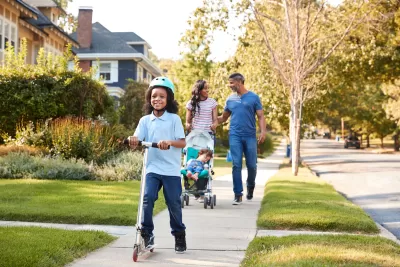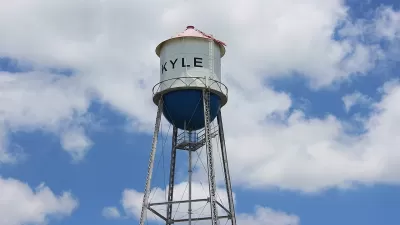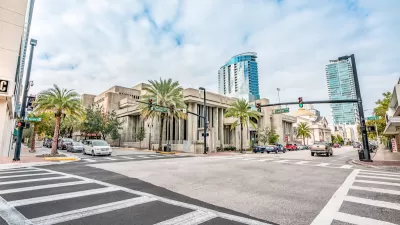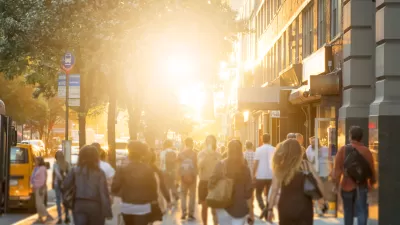Often overlooked, liminal spaces like front porches and sidewalks can boost social connections.

Writing in the Congress for the New Urbanism’s Public Square, Robert Steuteville outlines the growing evidence that front porches and sidewalks play a much more important role in civic life than they’re often given credit for, acting as critical components of social infrastructure.
“Porches are a transition zone between the public realm and private realm and they help to ease engagement with neighbors,” while sidewalks provide both critical safety infrastructure and a way for residents to meet and interact with one another. Steuteville cites several recent articles showing that more writers and urbanists are appreciating the benefits of porches and sidewalks.
Meanwhile, around the country, cities are committing to efforts to improve and expand their sidewalk networks. “Denver, which found that some 40 percent of its streets have no sidewalks or substandard ones, has passed an ordinance mandating special property taxes to finish its network. Sacramento is planning to use 20 percent of its transportation budget to make public sidewalks more accessible. Ithaca, N.Y., charges $70 annually per household and $185 per business to build and maintain city sidewalks.”
Steuteville cautions that porches or sidewalks alone aren’t enough to create social cohesion out of thin air. “But combine porches and sidewalks together as part of an urban ensemble, and you have the building blocks of community.”
FULL STORY: The infrastructure of community

Planetizen Federal Action Tracker
A weekly monitor of how Trump’s orders and actions are impacting planners and planning in America.

Maui's Vacation Rental Debate Turns Ugly
Verbal attacks, misinformation campaigns and fistfights plague a high-stakes debate to convert thousands of vacation rentals into long-term housing.

San Francisco Suspends Traffic Calming Amidst Record Deaths
Citing “a challenging fiscal landscape,” the city will cease the program on the heels of 42 traffic deaths, including 24 pedestrians.

Amtrak Rolls Out New Orleans to Alabama “Mardi Gras” Train
The new service will operate morning and evening departures between Mobile and New Orleans.

The Subversive Car-Free Guide to Trump's Great American Road Trip
Car-free ways to access Chicagoland’s best tourist attractions.

San Antonio and Austin are Fusing Into one Massive Megaregion
The region spanning the two central Texas cities is growing fast, posing challenges for local infrastructure and water supplies.
Urban Design for Planners 1: Software Tools
This six-course series explores essential urban design concepts using open source software and equips planners with the tools they need to participate fully in the urban design process.
Planning for Universal Design
Learn the tools for implementing Universal Design in planning regulations.
Heyer Gruel & Associates PA
JM Goldson LLC
Custer County Colorado
City of Camden Redevelopment Agency
City of Astoria
Transportation Research & Education Center (TREC) at Portland State University
Jefferson Parish Government
Camden Redevelopment Agency
City of Claremont





























